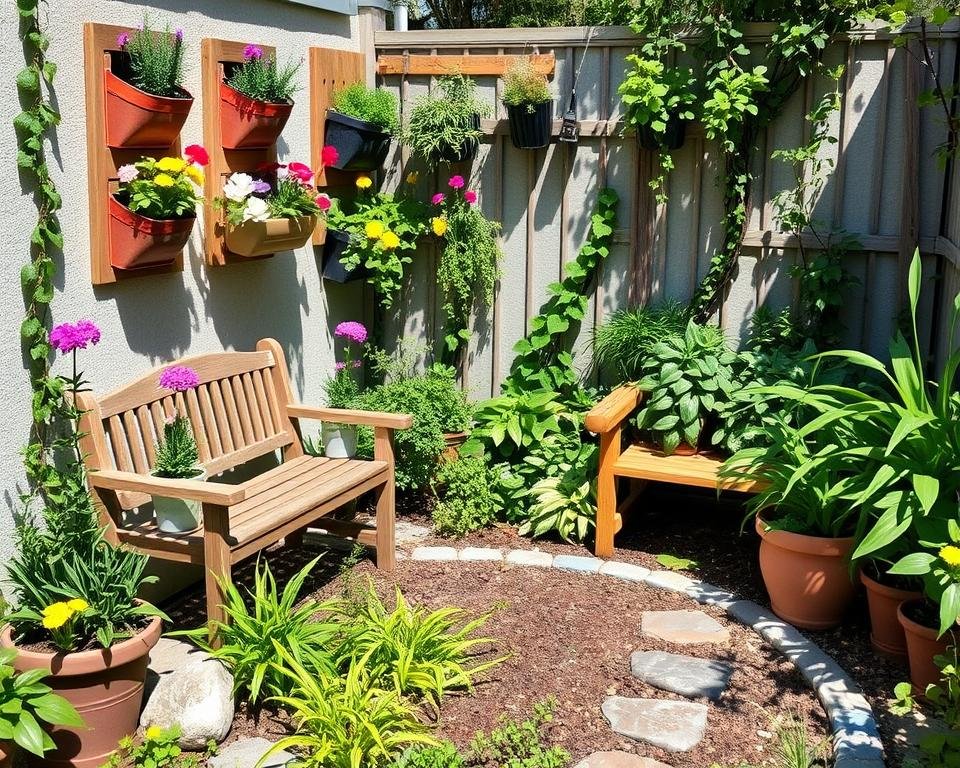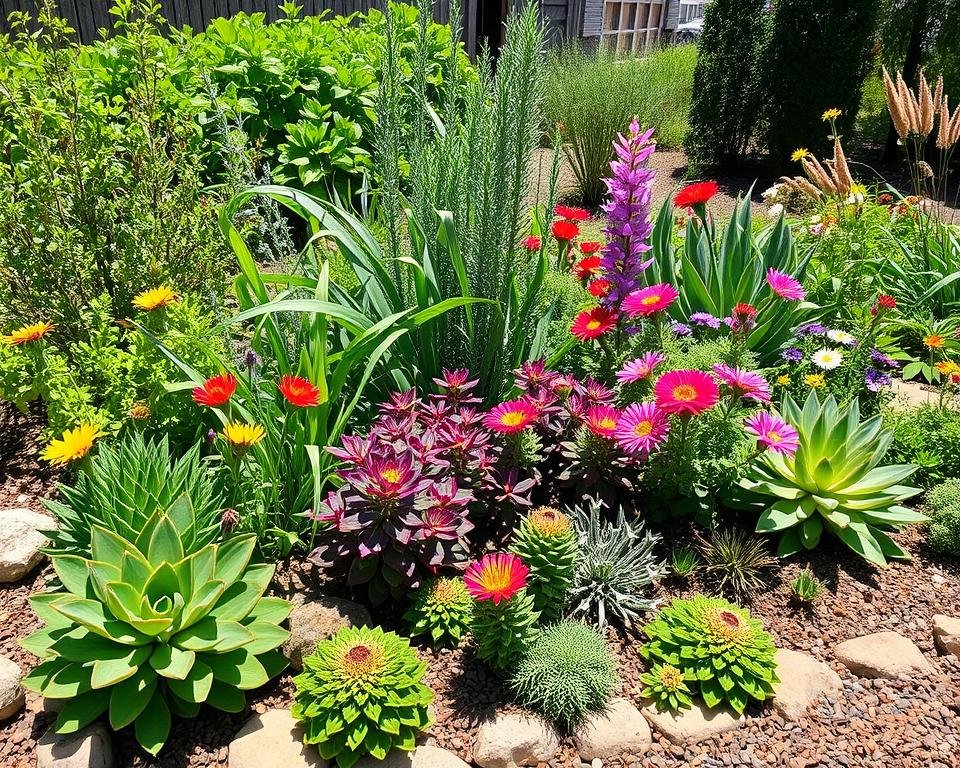Adding a small garden pond to your outdoor space can bring serenity and charm. This guide will help you create a beautiful water feature that enhances your backyard. You’ll learn how to plan, build, and add the final touches to your garden oasis.
Whether you’re an experienced gardener or a DIY novice, this guide has everything you need. You’ll discover the benefits of a water element, explore different pond types, and find the perfect spot and size for your space. Follow our expert tips to create a stunning water feature that beautifies and calms your backyard.
Introduction to Garden Ponds
A garden pond can transform your backyard into a serene oasis. These tranquil water features enhance your landscape’s visual appeal. They also offer numerous benefits that can elevate your gardening experience.
Benefits of Having a Garden Pond
- Attract a diverse array of wildlife, such as birds, dragonflies, and frogs, creating a thriving ecosystem in your own backyard oasis.
- Provide a soothing and calming environment, offering a peaceful retreat from the hustle and bustle of daily life.
- Enhance the overall aesthetic of your garden, adding a touch of natural elegance and charm.
- Serve as a focal point, drawing the eye and creating a sense of balance and harmony in your outdoor space.
- Offer the opportunity to cultivate aquatic plants, adding a unique and visually interesting element to your water gardens.
Types of Garden Ponds
There are several garden pond options, each with unique characteristics and advantages. From traditional in-ground ponds to modern above-ground water element installations, the choice depends on your space, budget, and preferences.
| Pond Type | Description | Advantages |
|---|---|---|
| In-Ground Ponds | Ponds that are dug into the ground, offering a more natural and integrated appearance. | Can be customized to fit the available space, provide a larger water volume, and create a seamless transition between the pond and the surrounding landscape. |
| Above-Ground Ponds | Ponds that are constructed above the ground, often using pre-formed or rigid pond liners. | Require less excavation, can be placed on patios or decks, and offer more flexibility in terms of size and shape. |
| Outdoor Fountains | Self-contained water features that incorporate a recirculating pump and a decorative fountain element. | Provide a focal point, add movement and sound to the garden, and can be easily installed in various locations. |
Regardless of the type of garden pond you choose, these water elements can transform your outdoor space into a true backyard oasis. They offer a serene and rejuvenating environment for you and your family to enjoy.
Planning Your Garden Pond
Creating a captivating garden pond requires thoughtful planning. The key to success lies in selecting the right location and determining the optimal size and shape. By carefully considering factors such as sun exposure, proximity to plants and trees, and the overall aesthetic you wish to achieve, you can design a garden pond that seamlessly integrates with your landscaping designs and enhances the natural beauty of your backyard.
Choosing the Right Location
The location of your garden pond is crucial. Choose a spot that receives ample sunlight, as this will support the growth of aquatic plants and create a soothing ambiance with the play of light on the water’s surface. Avoid areas that are heavily shaded by trees or structures, as this can limit plant growth and affect the overall health of your pond.
Additionally, consider the proximity of your pond to existing landscaping features. Positioning it near natural stone features or lush greenery can create a harmonious and visually appealing environment, complementing the soothing water sounds that will enhance the tranquility of your outdoor space.
Determining the Size and Shape
The size and shape of your garden pond should be tailored to the available space and your personal preferences. Smaller ponds can be equally captivating, offering a more intimate and manageable water feature that complements the scale of your backyard. Conversely, larger ponds can provide a more expansive and dramatic focal point, allowing for a greater diversity of aquatic plants and the possibility of incorporating fish.
When deciding on the shape, consider how it will integrate with your existing landscaping designs. Irregular or organic shapes often blend seamlessly with natural surroundings, while more geometric forms can create a contemporary or formal aesthetic. Ultimately, the size and shape of your garden pond should reflect your personal style and the overall vision for your outdoor living space.
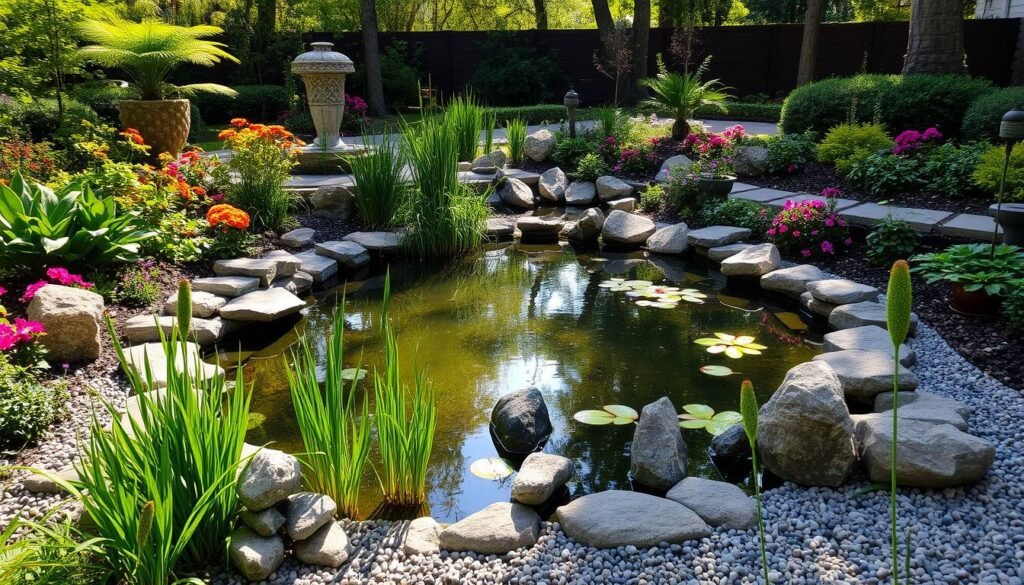
Instructions for creating a decorative water feature that adds beauty and tranquility
Creating a decorative water feature for your garden can be a rewarding project. It transforms your outdoor space into a serene haven. Whether you’re aiming for a small backyard fountain or a larger pond, these steps will help you build a stunning water element. This will enhance both the beauty and tranquility of your landscaping.
Begin by choosing the right location for your water feature. Opt for an area with plenty of sunlight and easy access for upkeep. Think about how the water feature will fit into your garden’s design.
Then, decide on the size and shape of your water feature. This choice depends on the space available, your budget, and the look you want. Measure the area carefully and plan the dimensions. Don’t forget to include space for the pump or filtration system needed for upkeep.
- Excavate the area for your water feature, ensuring the depth is right for your design.
- Line the excavated area with a durable, watertight liner, like EPDM rubber or a pre-formed pond liner.
- Install the plumbing and electrical components, including the pump and any lights.
- Add decorative elements, such as rocks, boulders, or aquatic plants, to enhance the design.
- Fill the water feature with clean, dechlorinated water and test the pump and filtration system.
By following these steps, you can turn your garden into a serene oasis. Enjoy the soothing sound of flowing water and the beauty of your DIY water element installation.
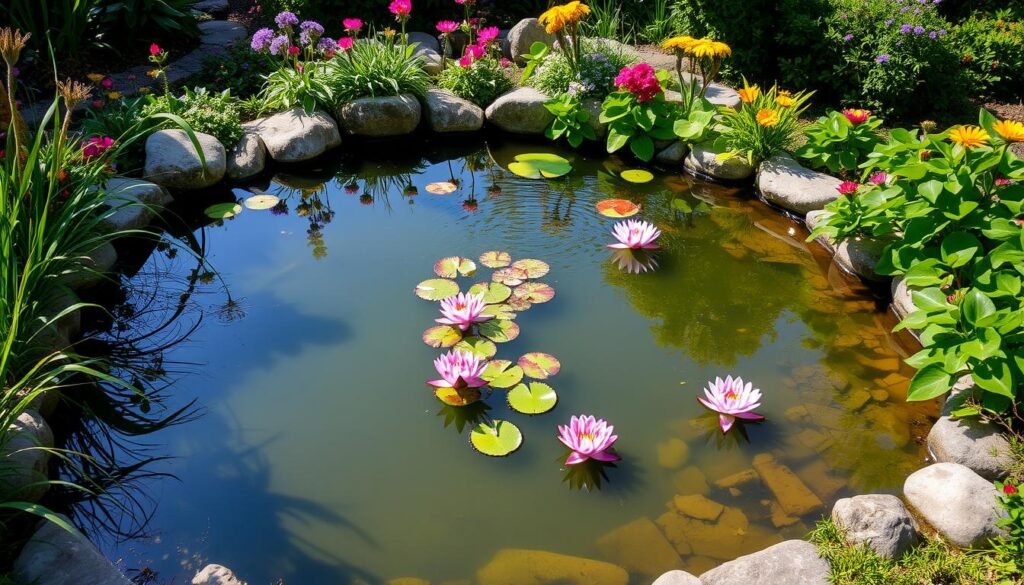
Constructing Your Garden Pond
After planning your garden pond, it’s time to start building. Creating a diy water feature like a pond demands precision. Yet, with the right steps, you can craft a breathtaking landscaping design. This design will highlight the natural beauty of your outdoor area.
Excavating the Pond Area
The first step is to excavate the pond area. Use a shovel or a small excavator to remove soil carefully. Ensure the shape and depth match your design, aiming for a minimum depth of 24 inches. This depth is crucial for natural stone features and aquatic plants.
Be cautious of underground utilities and roots while digging. Avoid damaging these to prevent disruptions. After excavation, smooth the pond’s sides and bottom for a clean finish.
Installing the Liner
To ensure your pond is watertight, install a pond liner. Opt for a high-quality EPDM or PVC liner, suitable for outdoor use. Measure the area and choose a liner slightly larger for proper fit and overlap.
- Lay the liner in the excavated area, ensuring it’s centered and smooth.
- Secure the liner edges by tucking them into the soil or using rocks or staples.
- Trim excess liner, leaving a few inches of overlap around the perimeter.
- Fill the liner with water to test for leaks and make adjustments as needed.
With the pond excavated and the liner installed, you’re close to creating a stunning diy water feature. This feature will enhance your landscaping designs and introduce natural stone features to your outdoor space.
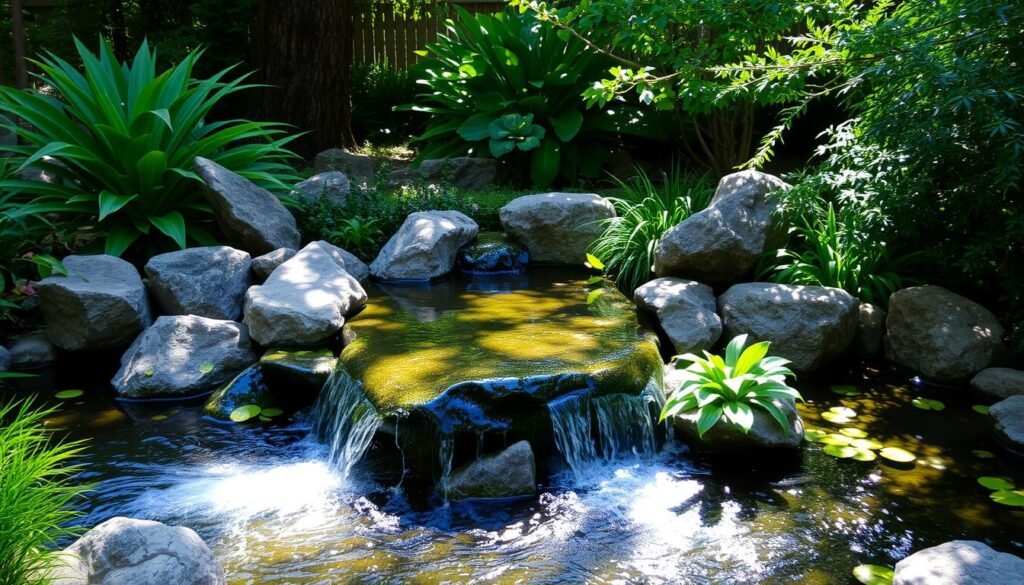
Adding Water and Finishing Touches
With the foundation of your backyard oasis set, it’s time to bring your water gardens to life. Filling the pond with fresh water is essential, but don’t stop there. Thoughtful landscaping and strategic decorative touches can transform your serene water feature into a true backyard oasis.
Filling the Pond with Water
Carefully fill your garden pond with clean, dechlorinated water. This step is crucial for a healthy environment for any aquatic plants or fish. Use a hose or bucket to add water gradually, avoiding any disturbance to the pond liner or existing features. Monitor the water level and adjust as needed to reach the desired depth.
Landscaping and Decorating
Surround your water gardens with carefully curated landscaping elements. These should complement the soothing water sounds and create a cohesive, visually appealing design. Consider adding:
- Strategically placed boulders or natural stones to define the pond’s edges
- Lush, water-friendly plants that will thrive around the pond’s perimeter
- Decorative features like fountains, waterfalls, or a small bridge to enhance the aesthetic
- Lighting elements to illuminate the backyard oasis and create a tranquil ambiance at night
By meticulously planning the finishing touches, you can transform your garden pond into a true water gardens. It will offer soothing water sounds and a serene retreat in your own backyard.
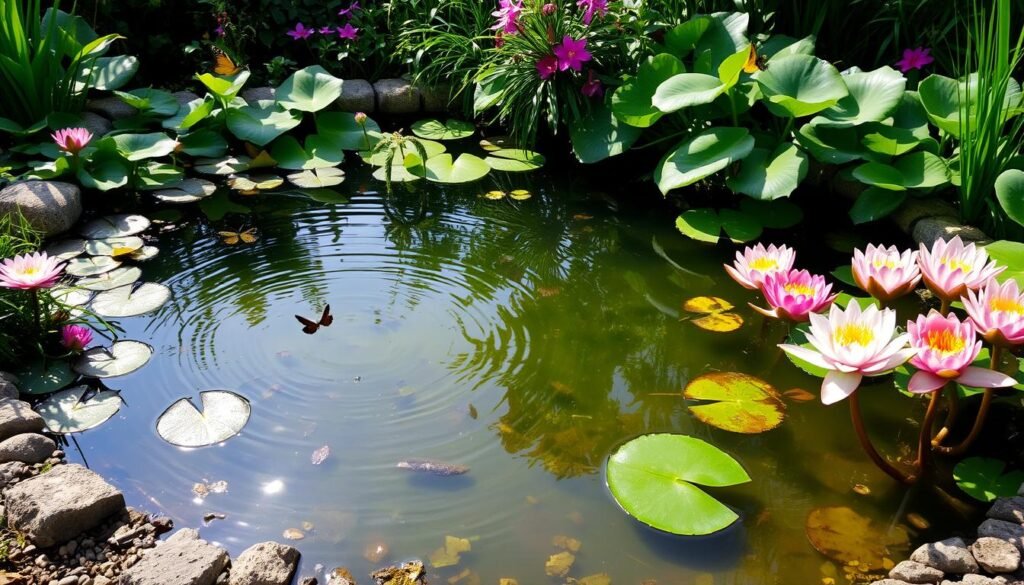
Maintaining Your Garden Pond
Ensuring your garden ponds stay in prime condition is vital for their longevity. This part delves into the key aspects of water quality upkeep, effective filtration systems, and the care of plants and fish. These elements are crucial for the health of your outdoor fountains.
Water Quality and Filtration
Water quality in your water gardens is paramount for the ecosystem’s health. It’s essential to regularly test and monitor pH levels, oxygen, and contaminants. A reliable filtration system is necessary to keep the water pristine and free of debris.
- Test water quality regularly to identify any imbalances
- Install a high-quality filtration system to keep the water clean
- Perform periodic water changes to replenish and refresh the pond
Plant and Fish Care
Proper care is necessary for plants and fish in your garden pond. Prune and trim aquatic plants to ensure their health and look. Monitor your fish, provide the right food, and address any issues promptly for their well-being.
- Regularly prune and maintain aquatic plants
- Feed fish the correct amount and type of food
- Observe fish behavior and address any health concerns quickly
By adhering to these maintenance guidelines, your garden ponds will remain vibrant and healthy. This ensures your water gardens and outdoor fountains remain enjoyable for years.
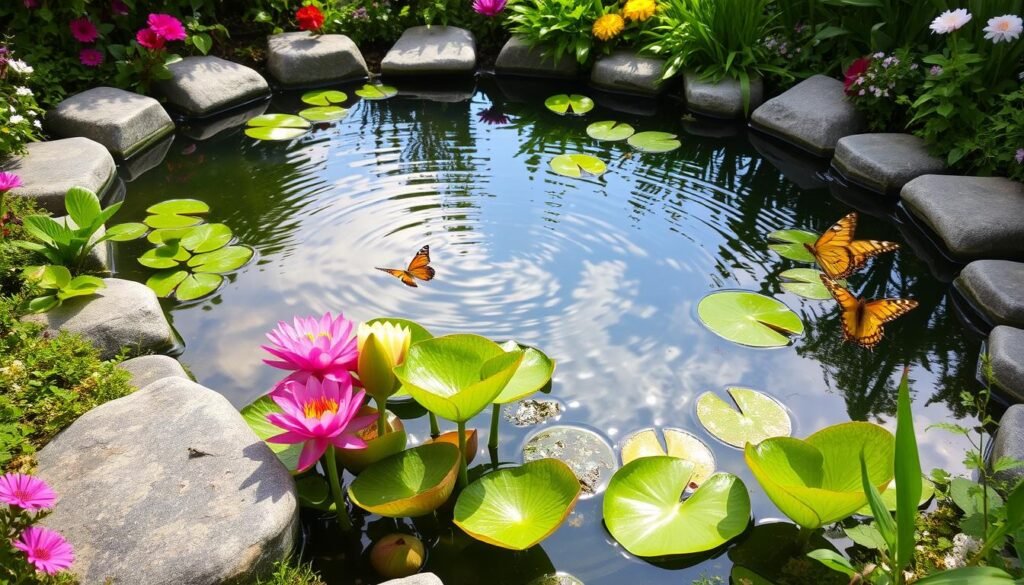
Conclusion
Creating a small garden pond is a rewarding project that brings beauty, tranquility, and a unique focal point to your outdoor area. This guide offers step-by-step instructions to help you build a stunning water feature. It will enhance your yard’s aesthetic and create a serene environment for years.
Whether you aim to build a water garden, install an outdoor fountain, or construct a garden pond, this guide covers the key aspects. It includes planning, construction, maintenance, and finishing touches. By adding landscaping designs, natural stone features, and the calming sounds of water, you can turn your backyard into a peaceful oasis.
With the knowledge from this article, you’re ready to start your garden pond project. It will be a stunning and serene addition to your outdoor space. Enjoy the process of working with water and express your creativity to create a backyard haven that reflects your style and preferences.
FAQ
What are the benefits of having a garden pond?
Garden ponds bring numerous benefits, from enhancing your landscape’s visual appeal to creating a peaceful environment. They add a calming, serene touch to your outdoor space. The soothing sounds of water enhance the aesthetic, making your area more tranquil.
What are the different types of garden ponds?
You can choose from various garden pond types, including traditional in-ground ponds and modern designs. The right pond for you depends on your yard size, desired look, and budget. Each type offers unique features and benefits.
How do I choose the right location for my garden pond?
When picking a pond location, consider sun exposure, plant and tree proximity, and aesthetic goals. Opt for a level, accessible spot, avoiding areas with heavy foot traffic or near buildings.
How do I determine the size and shape of my garden pond?
Pond size and shape depend on your yard space and personal taste. Think about your outdoor space’s scale, desired plants and features, and visual impact goals. This will help you choose the right dimensions.
What are the steps for constructing a decorative water feature?
Constructing a decorative water feature involves several steps. First, excavate the area, then install a waterproof liner. Next, add water and complete with landscaping and decorations. Following these steps ensures a lasting, beautiful water feature.
How do I maintain the water quality and care for the plants and fish in my garden pond?
Keeping your pond water quality high is crucial for its health and enjoyment. Use a good filtration system, regularly check water chemistry, and care for plants and fish. Monitoring the pond for issues and addressing them promptly is also key.
